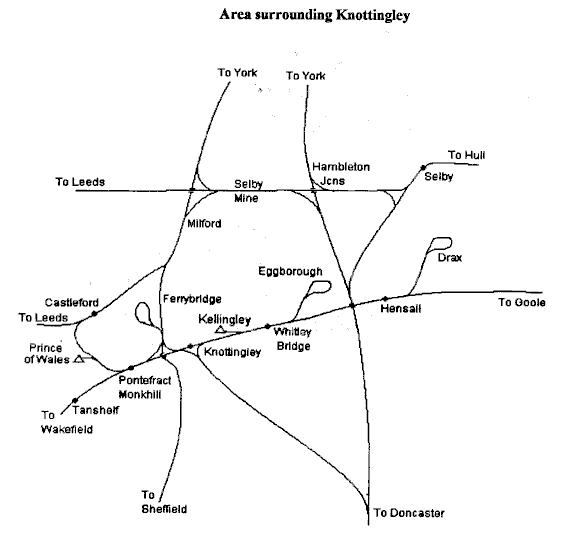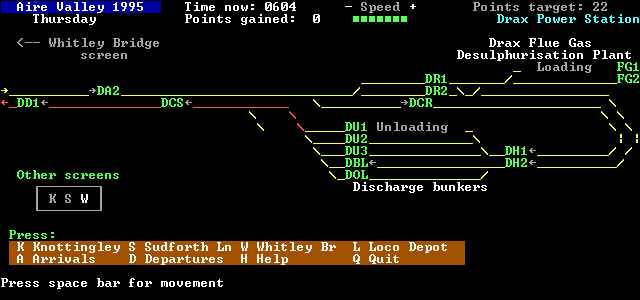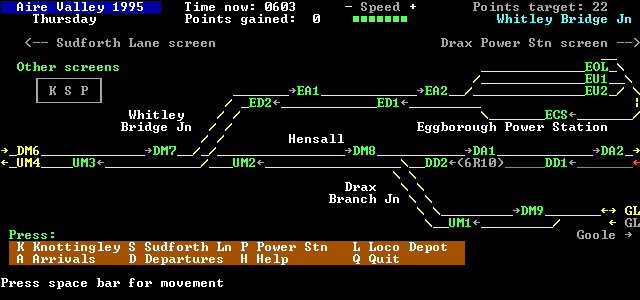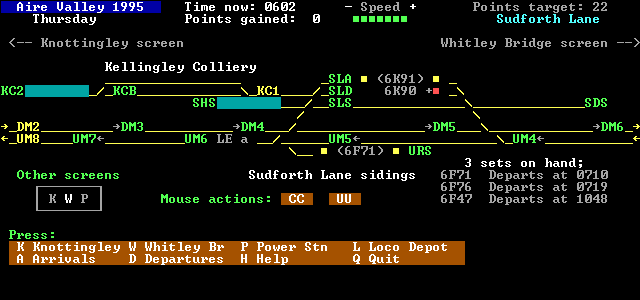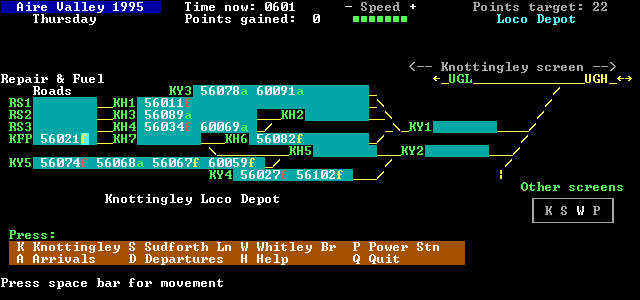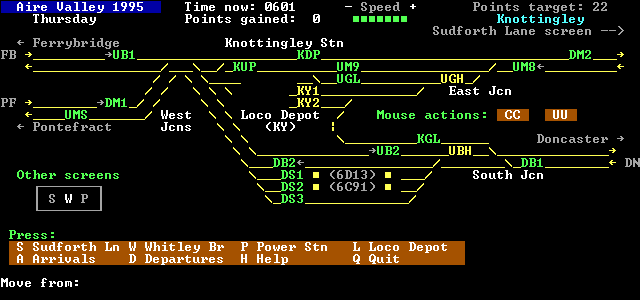|
Our first from Brian Hornsey, this covers the largely freight line from Knottingley to Drax power station, including Knottingley triangle, station and depot, Kellingley colliery, Sudforth Lane sidings, and the power stations at Eggborough and Drax. There are five track screens. You have to route all the merry-go-round services to and from the power stations, as well as handling a variety of other traffic. You have to provide power for services originating at Sudforth Lane, and for some light engine workings, as well as sometimes replacing locos needing fuel or other attention at the depot.
|
|
This simulation is based on services to the Aire Valley power stations at Eggborough, Drax and Ferrybridge, with it's associated depot at Knottingley.
The original Lancashire & Yorkshire Railway line from Wakefield to Goole runs from west to east and in the main route for the Regional Railways service to Knottingley and Goole. The branch to Doncaster, also formerly L&YR, leaves to the south via a triangular junction at Knottingley. This line carries freight traffic to and from the Doncaster district and no passenger services are scheduled, although it is often used as a diversionary route when the main line to Leeds or York is blocked. There is also a connecting curve to the north to Ferrybridge Junction on the former North Eastern Railway to York via Church Fenton; services to Ferrybridge Power Station using the line of the former Hull & Barnsley Railway which closed some years before.
All lines are double track except for the line between Drax Branch Junction and Goole, which is single for most of it's length, as is the East Curve at Knottingley. Sidings for stabling MGR coal wagon sets exist at Sudforth Lane, Pontefract Monkhill and Milford. However, many of these wagon sets are in almost continous service during the day. The locomotive depot is located in the triangle of the junctions at Knottingley, together with the wagon repair shops. The connections into the shops are shown on the displays but no other parts of it are shown in this simulation.
The vast majority of traffic in this district is of coal movements between the surrounding collieries and the local power stations. These are formed of sets of 36 'Merry-go-Round' coal hopper wagons, so called by the fact that the discharging facilities at these power stations are formed in a loop and the trains are able to run through and discharge, almost without stopping. Services also run to the Gas Flue Desulphurisation Plant at Drax. These bring in limestone used to clean the exhaust emissions from the furnace chimneys, and also to take away gypsum, a byproduct of this process. Other services run between the Doncaster line and Ferrybridge or Pontefract, though not in the numbers that the coal services run. A regular passenger service runs between Wakefield or Leeds and Knottingley, a small number running on to Goole and back.
You are responsible for all traffic in the area. Due to mining subsidence, much of the route is of a low speed limit, often as low as 20 mph. This means that there is little difference in running times between different train types.
You have to direct all trains into, through and out of the area, selecting routes to avoid delay to trains and minimise congestion, you also have to manage the loco depot and ensure that locos are refuelled and serviced ready for duty and that each train has suitable motive power.
Many of the places served by trains in this simulation may be unfamiliar to you as they are mostly collieries and power stations in the Yorkshire and Nottinghamshire districts. However, each train that leaves your area will clearly show which route is required to avoid doubt, particularly as services to certain locations may depart on one route and return on another.
This simulation is based on those passenger services and some freights scheduled to run during the early period of 1995 and a typical selection of services to the local power stations, though these vary greatly on a daily basis according to demand. For added realism, at higher difficulty levels, arriving trains may be late and engines may occasionally need fuel or attention in the depot, though the engines in use are normally fuelled to capacity at the start of it's duties and have a 30 hour range. An added complication may occur with MGR sets at power stations. Each is examined before departure and if defects are found, the wagon will need to be detached before continuing. The engines that will be present are those that were at the relevant depots at this time, and of classes that were scheduled for similar services.
|
